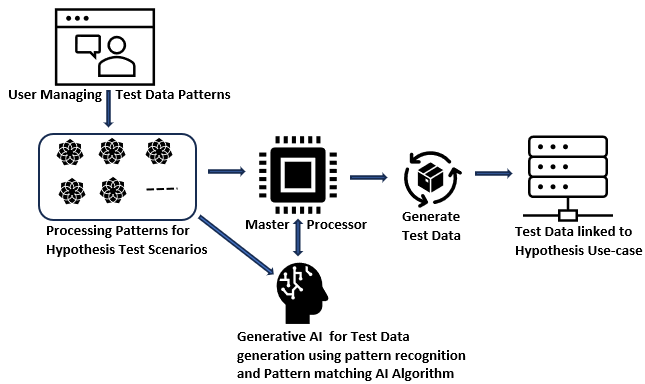Experts: 'Quiet cutting' employees makes no sense, and it's costly

The practice involves reassigning workers to roles that don’t align with their
career goals to achieve workforce reduction by voluntary attrition — allowing
companies to avoid paying costly severance packages or unemployment benefits.
“Companies are increasingly using role reassignments as a strategy to sidestep
expensive layoffs,” said Annie Rosencrans, people and culture director at HiBob,
a human resource platform provider. “By redistributing roles within the
workforce, organizations can manage costs while retaining valuable talent,
aligning with the current trend of seeking alternatives to traditional layoffs.”
... The optics around quiet cutting and its effects on employee morale is a big
problem, however, and experts argue it’s not worth the perceived cost savings.
Companies reassigning workers to jobs that may not fit their hopes for a career
path or align with their skills can be demoralizing to remaining workers and
lead to “disengagement,” according to Chertok. He argued that the quiet cutting
trend isn’t necessarily intentional; it's more indicative of corporate America’s
need to reprioritize how talent is moved around within an organization.
Why We Need Regulated DeFi
One of DeFi´s greatest challenges are liquidity issues. In a decentralized
exchange, liquidity is added and owned by users, who often abandon one protocol
for another offering better rewards thus resulting in unstable liquidity on DeFi
protocols. A liquidity pool is a group of digital assets gathered to facilitate
automated and permissionless trading on a decentralized exchange platform. The
users of such exchange platforms don’t rely on a third party to hold funds but
transact with each other directly. ... There are many systemic risks currently
present in DeFi. For example, potential vulnerabilities in smart contracts can
expose users to security breaches. DeFi platforms are often interconnected,
meaning a problem on one platform can quickly spread and impact others,
potentially causing systemic failures. Another potential systemic risk is the
manipulation or failure of oracles, which bring real-world data onto the
blockchain. This can result in bad decisions and lead to losses. Ultimately,
regulated DeFi can help enforce security standards, fostering trust among
users.
Microsoft Azure Data Leak Exposes Dangers of File-Sharing Links

There are so many pitfalls in setting up SAS tokens that Wiz's Luttwak
recommends against ever using the mechanism to share files from a private cloud
storage account. Instead, companies should have a public account from which
resources are shared, he says. "This mechanism is so risky that our
recommendation is, first of all, never to share public data, within your storage
account — create a completely separate storage account only for public sharing,"
Luttwak says. "That will greatly reduce the risk of misconfiguration. You want
to share public data, create a public data externally storage account and use
only that." For those companies that continue to want to share specific files
from private storage using SAS URLs, Microsoft has added the capability as part
of GitHub's monitoring of the exposure of credentials and secrets. The company
has rescanned all repositories, the company stated in its advisory. Microsoft
recommends that Azure users limit themselves to short-lived SAS tokens, apply
the principle of least privilege, and have a revocation plan.
Chaos Engineering: Path To Build Resilient and Fault-Tolerant Software Applications

The objective of chaos engineering is to unearth system restraints,
susceptibilities, and possible failures in a controlled and planned manner
before they exhibit perilous challenges resulting in severe impact on the
organizations. Few of the most innovative organizations based on learning from
past failures understood the importance of chaos engineering and realized it as
a key strategy to unravel profound hidden issues to avoid any future failures
and impacts on business. Chaos engineering lets the application developers
forecast and detect probable collapses by disrupting the system on purpose. The
disruption points are identified and altered based on potential system
vulnerabilities and weak points. This way the system deficiencies are identified
and fixed before they degrade into an outage. Chaos engineering is a growing
trend for DevOps and IT teams. A few of the world’s most technologically
innovative organizations like Netflix and Amazon are pioneers in adopting chaos
testing and engineering.
Unregulated DeFi services abused in latest pig butchering twist

At first glance, the pig butchering ring tracked by Sophos operates in much the
same way as a legitimate one, establishing pools of cryptocurrency assets and
adding new traders – or, in this case, victims – until such time as the cyber
criminals drain the entire pool for themselves. This is what is known as a
rug-pull. ... “When we first discovered these fake liquidity pools, it was
rather primitive and still developing. Now, we’re seeing shā zhū pán scammers
taking this particular brand of cryptocurrency fraud and seamlessly integrating
it into their existing set of tactics, such as luring targets over dating apps,”
explained Gallagher. “Very few understand how legitimate cryptocurrency trading
works, so it’s easy for these scammers to con their targets. There are even
toolkits now for this sort of scam, making it simple for different pig
butchering operations to add this type of crypto fraud to their arsenal. While
last year, Sophos tracked dozens of these fraudulent ‘liquidity pool’ sites, now
we’re seeing more than 500.”
Time to Demand IT Security by Design and Default
Organizations can send a strong message to IT suppliers by re-engineering
procurement processes and legal contracts to align with secure by design and
security by default approaches. Updates to procurement policies and processes
can set explicit expectations and requirements of their suppliers and flag any
lapses. This isn’t about catching vendors out – many will benefit from the
nudge. Changes in procurement assessment criteria can be flagged to IT suppliers
in advance to give them a chance to course-correct. Suppliers can then be
assessed against these yardsticks. If they fail to measure up, organizations
have a clear justification to stop doing business with them. The next step is to
create liability or penalty clauses in contracts that force IT vendors to share
security costs for fixes or bolt-ons. This will drive them to devote more
resources to security and prevent rather than scramble to cure security risks.
Governments can support this by introducing laws that make it easier to claim
under contracts for poor security.
DeFi as a solution in times of crisis

The collapse of Silicon Valley Bank in March 2023 shows that even large banks
are still vulnerable to failure. But instead of requiring trust that their money
is still there, Web3 users can verify their holdings directly on chain.
Additionally, blockchain technology allows for a more efficient and
decentralized financial landscape. The peer-to-peer network pioneered by Bitcoin
means that investors can hold their own assets and transact directly with no
middlemen and significantly lower fees. And unlike with traditional banks, the
rise of DeFi sectors like DEXs, lending and liquid staking means individuals can
now have full control over exactly how their deposited assets are used.
Inflation is yet another ongoing problem that crypto and DeFi help solve. Unlike
fiat currencies, cryptocurrencies like bitcoin have a fixed total supply. This
means that your holdings in BTC cannot be easily diluted like if you hold a
currency such as USD. While a return to the gold standard of years past is
sometimes proposed as a potential solution to inflation, adopting crypto as
legal tender would have a similar effect while also delivering a range of other
benefits like enhanced efficiency.
Cyber resilience through consolidation part 1: The easiest computer to hack

Most cyberattacks succeed because of simple mistakes caused by users, or users
not following established best practices. For example, having weak passwords or
using the same password on multiple accounts is critically dangerous, but
unfortunately a common practice. When a company is compromised in a data breach,
account details and credentials can be sold on the dark web and attackers then
attempt the same username-password combination on other sites. This is why
password managers, both third-party and browser-native, are growing in
utilization and implementation. Two-factor authentication (2FA) is also growing
in practice. This security method requires users to provide another form of
identification besides just a password — usually via a verification code sent to
a different device, phone number or e-mail address. Zero trust access methods
are the next step. This is where additional data about the user and their
request is analyzed before access is granted.
AI for Developers: How Can Programmers Use Artificial Intelligence?

If you write code snippets purely by hand, it is prone to errors. If you audit
existing code by hand, it is prone to errors. Many things that happen during
software development are prone to errors when they’re done manually. No, AI for
developers isn’t completely bulletproof. However, a trustworthy AI tool can help
you avoid things like faulty code writing and code errors, ultimately helping
you to enhance code quality. ... AI is not 100% bulletproof, and you’ve probably
already seen the headlines: “People Are Creating Records of Fake Historical
Events Using AI“; “Lawyer Used ChatGPT In Court — And Cited Fake Cases. A Judge
Is Considering Sanctions“; “AI facial recognition led to 8-month pregnant
woman’s wrongful carjacking arrest in front of kids: lawsuit.” This is what
happens when people take artificial intelligence too far and don’t use any
guardrails. Your own coding abilities and skill set as a developer are still
absolutely vital to this entire process. As much as software developers might
love to completely lean on an AI code assistant for the journey, the technology
just isn’t to that point.
The DX roadmap: David Rogers on driving digital transformation success
companies mistakenly think that the best way to achieve success is by committing
a lot of resources and focusing on implementation at all costs with the solution
they have planned. Many organizations get burned by this approach because they
don’t realize that markets are shifting fast, new technologies are coming in
rapidly, and competitive dynamics are changing swiftly in the digital era. For
example, CNN decided to get into digital news after looking at many benchmarks
and reading several reports, thinking subscribers will pay monthly for a
standalone news app. It was a disaster and they shut down the initiative within
a month. To overcome this challenge, companies must first unlearn the habit of
assuming things they know that they don’t know and are trying to manage through
planning. They should rather manage through experimentation. CIOs can help their
enterprises in this area. They must bring what they have learned in their
evolution towards agile software development over the years and help apply these
rules of small teams, customer centricity, and continuous delivery to every part
of the business.
Quote for the day:
"Strategy is not really a solo sport _
even if you_re the CEO." -- Max McKeown
No comments:
Post a Comment